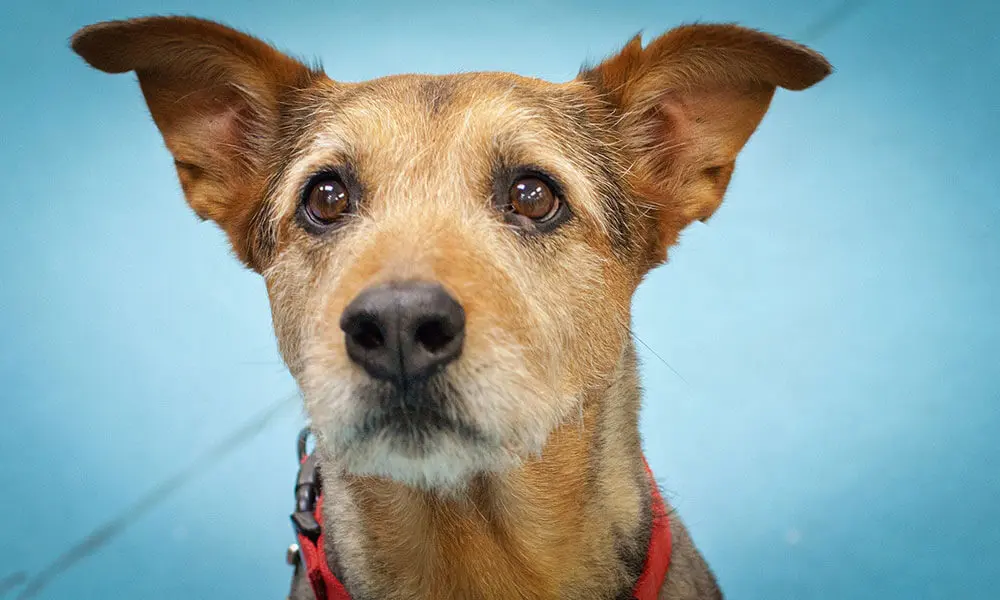“Fear is the worst thing a social species can experience and it causes permanent damage to the brain”
– Karen Overall, MA, VMD, PhD, DACVB, CAAB: World-Renowned Veterinary Behaviorist
Veterinary visits should not be stressful events for any pet. Fear, anxiety, and stress have significant health consequences for pets, which should be avoided. By working together, we can take the fear out of veterinary care. The following are some of the methods we use to protect your pet’s emotional well-being:
Leave the Pet in Control
Allow pets in carriers to come out on their own. Treats or toys can also be used to encourage pets to explore and become more comfortable in their new environment. We will attempt to perform any exams or procedures wherever your pet is most comfortable (table, floor, lap, etc.). If your pet becomes reactive and cannot be calmed, we may recommend rescheduling the appointment and using a prescribed sedative.
Set the Mood
Our staff often use soft voices in the room and keep noise to a minimum. We invite you to do the same (includes silencing phones) to help your pet remain calm. We frequently play gentle music that has been shown to have a calming effect on pets.
Sedatives
When medically appropriate, our doctors can prescribe medications that take the edge off your pet’s anxiety and help them remain relaxed.
Treats
Unless inappropriate for your pet’s health, we have a variety of treats to reinforce positive experiences and help your pet associate the hospital with a fun event. Avoid giving the same treats at home to make the veterinary visit more rewarding for your pet.
Pheromones
We spray ‘chemical signals,’ that only pets can detect, in the rooms and on ourselves and equipment. They help pets feel more safe and calm and are available for purchase to use at home and while traveling.
Adaptil®: This synthetic pheromone, that mother dogs emit to help their puppies feel safe and reassured, is effective for dogs of all ages.
Feliway®: Cats produce a natural form of this pheromone to mark safe areas.
Fear free veterinary visits begin at home, long before the appointment.
These are some tools and tactics you can use at home to help prepare your pet for a trip to the veterinarian with far less fear, anxiety, and stress:
Environment
Calm music: (especially gentle classical music) can help keep your pet calm at home before the appointment and during the car ride.
Familiar scents: Bringing a favorite toy or blanket that smells like home can help your pet relax.
Calming Products
Thundershirt: A calming body wrap for dogs — like a warm hug.
Sedative Medication
When medically appropriate, the doctor may prescribe medications that are given at home, before the appointment to keep your pet calm.
Hunger
When appropriate, bring your pet in hungry to reduce carsickness and make your pet more eager to earn treats during the exam, reinforcing a positive experience.
Carriers
Type: Choose carriers with hard outer shells that can easily open from the top and front.
Storage: Bring the carrier out a few days before the visit (or even better, keep it out all the time) so your pet becomes more comfortable with it.
Training
Positive, gentle, reward-based training will help your pet remain calm in many settings. Direct your pet to perform favorite tricks or commands while waiting for the doctor to stay occupied, calm, and happy.
Play Doctor
Touch: Mimic the doctor’s exam – play with feet, look in and touch mouth, lift tail, etc. – soon the doctor’s routine will seem much less frightening.
Tools: For example, ask for a plastic syringe to take home. When your pet is comfortable with it, pull up a little skin as if to give a shot, then poke gently with the plastic – go slowly and use plenty of treats until the syringe is no longer scary.
Routine Considerations
Vary your routine: Pets that have already had a traumatic experience at the vet, will be cautious of anything that might indicate the threat of another trip there. For example, if you only bring out your pet’s carrier when it is time to go to the doctor, your pet may experience fear and anxiety every time it sees the carrier.
Vary your path: Using a different entrance, hallway, and/or room can reduce the return of past fearful emotions. Ask our team if you would like help with this.
Transportation Considerations
Car rides can be less traumatic if you help your pet ease in. Over time, progress through these stages: sit with your pet in the car while off, start the car, take short trips, then take longer trips (including just-for-fun visits to the doctor).
Carrier: Place the carrier on a steady, level surface (on the floor, behind the passenger seat is safest) and always carry carefully, with 2 hands. Timing: Leave early for appointments. Pets will be more relaxed when you are less stressed and you will be less likely to need to brake suddenly. Noise: Soft music, especially classical, played in the car will help everyone remain calm. Talking to your pet along the way is also reassuring – use a soft, low voice (not baby talk).

